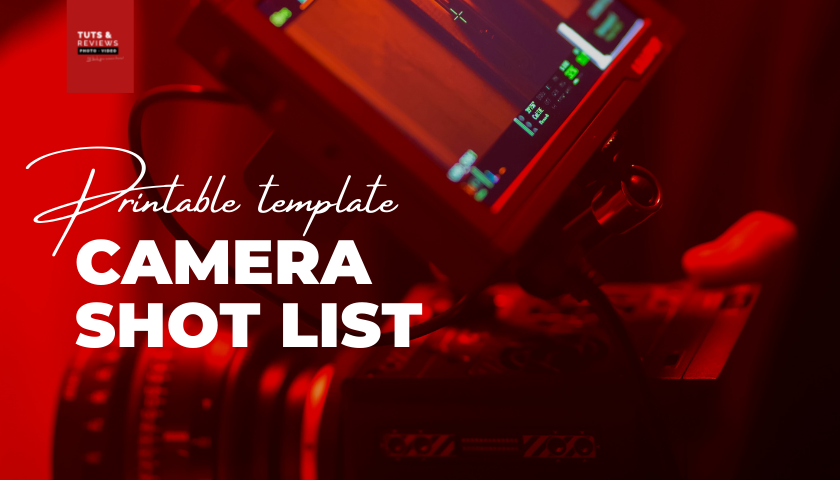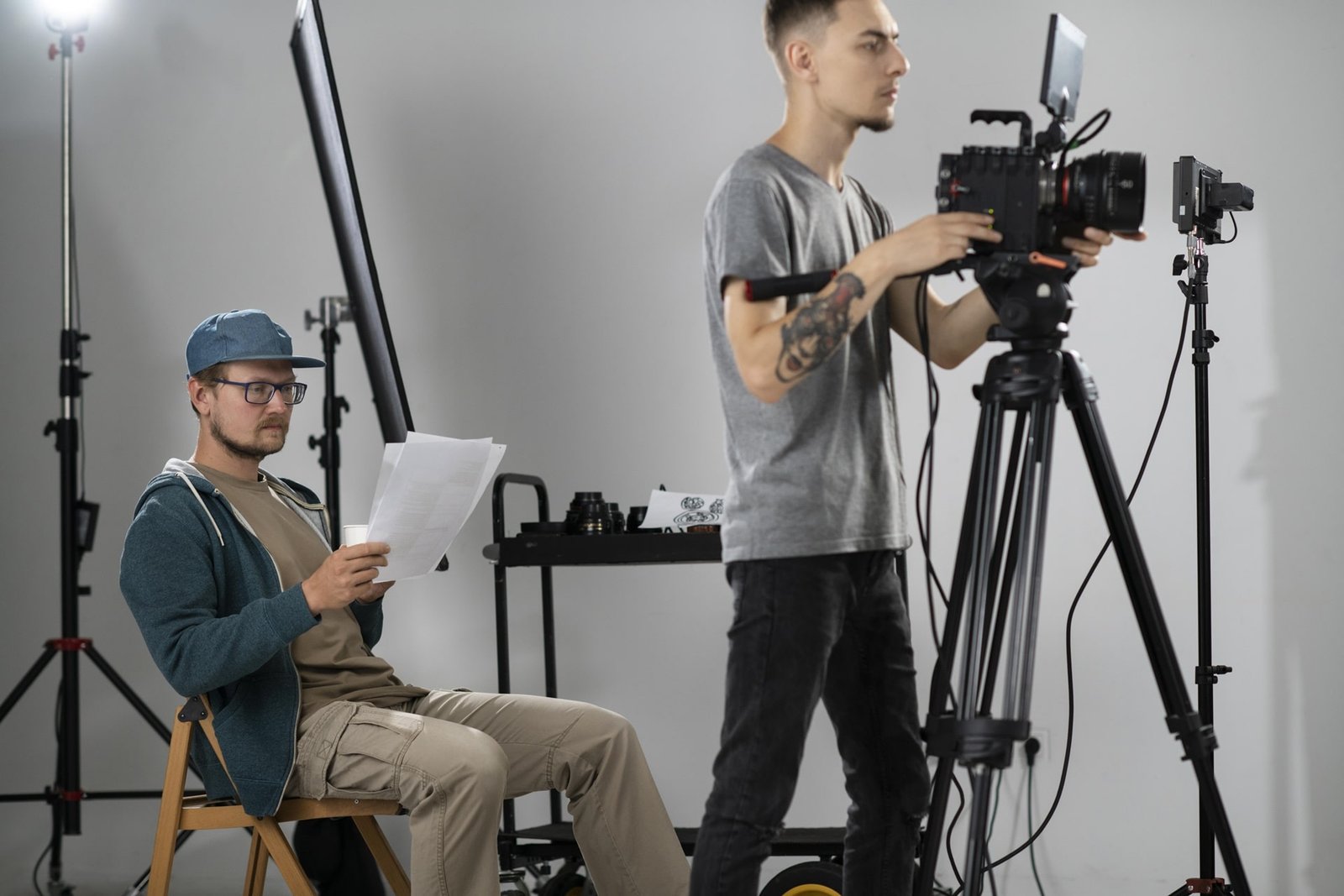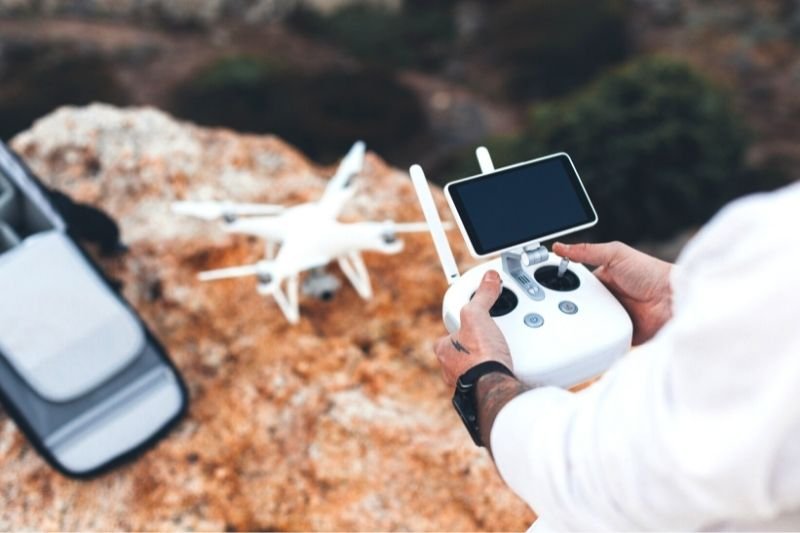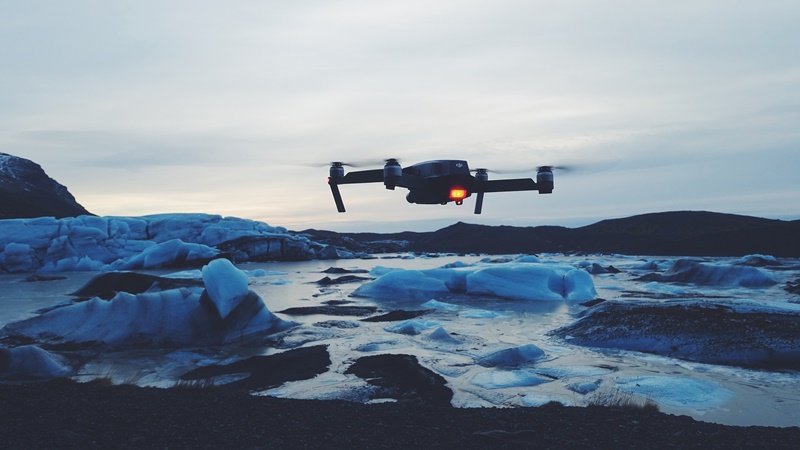What is a drone?
The terms unmanned aerial vehicle (UAV) and drone are used interchangeably. According to the FAA, a UAV is an aircraft without an onboard human pilot, controlled either autonomously or by remote control. The term unmanned aircraft system (UAS) refers to the unmanned aircraft and all of its components including, but not limited to: control stations and software, remote controls (if necessary), control links, payloads, launch and recovery equipment. As a beginner, before buying a drone and starting to use it, you should go through our Drone Glossary to get a deeper understanding of all the acronyms related to drones.
Alternate Names for Drones:
Hobby Names:
- Quadcopter: The most popular name for Small UAVs, which has 4 rotors positioned on a horizontal plane like a helicopter. Other names include Quadricopter, Quadrocopter
- Multicopter: A generic name for a drone with multiple propellers. This covers quadcopters, octocopters, etc.
- Hexicopter: A multi-rotor aircraft having six rotors in which the beauty and advantage of the hexicopter is that it can lose any single engine and still maintain control to land
- Octocopters: Has eight blades
The multirotors with a high number of blades are typically larger and designed to carry a heavier payload. For example, Amazon’s recent announcement about using unmanned aerial vehicles to deliver packages shows the company utilizing octocopters, given their increased range, stability, and ability to carry moderate amounts of weight.
Military Names:
- RPAS – Remotely Piloted Aerial System
- UAV – Unmanned Aerial Vehicle
- UAS – Unmanned Aircraft System
- SUAS: Small Unmanned Aircraft System
Quadcopter Grades:
Toy Grade: Small (nano/micro ) sized quadcopters, Inexpensive and a good size to start with for most beginners.
Hobby Grade: Mid-sized Drones, used by novice flyers with some experience. Many have cameras or a way to attach one.
Professional Grade: High end copters with 4 or more propellers, Most have HD cameras for aerial photography and offer more features along with the longest flight times.
Flying Terms:
Yaw: If you were looking down on a drone from above, yaw refers to the movement of the drone clockwise or counterclockwise.
Pitch: Simply describes movement up and down along the vertical axis from the front to the back of the drone.
Roll: Is the rotation of the aircraft from front to back on a copter. Basically it refers to the movement of the drone forward, backward, left and right along a horizontal axis.
Drone Glossary of Terms:
2.4 Ghz Spread Spectrum: Ghz is short for gigahertz and describes the radio frequency rate used by a drone controller. The 2.4 gigahertz spread spectrum controllers have become the gold standard for low budget drones. Because the spread spectrum is “frequency agile,” it can “hop” to different frequencies to account for any atmospheric or other issues a drone pilot may experience, which means fewer crashes.
5.8GHz: Used in hobby and professional grade RC drones. A live feed sent from a drone’s camera that provides better range and less lag, Very popular in Fpv racing and usually paired with a set of FPV Goggles.
808 Camera: This is a common term for a range of very small cameras, which are often sold as keychain cameras. They are extremely lightweight and are used by hobbyists in order to take pictures from a multi-rotor aircraft.
A
Accelerometer: A device that measures the acceleration forces in a certain direction and helpful in maintaining the Drones orientation. These devices are used to stabilize quadcoptors. The accelerometer measures linear acceleration in one to three axes. Units are normally in ‘g’ or gravity. An accelerometer is able to provide your drone’s orientation with respect to ground.
Aerial Photography: the hobby of capturing images and video while in the air with a camera mounted to your drone.
AGL: Altitude above ground level
Altitude Hold function: Allows pilot to focus on the camera while the drone hovers steadily in air by itself at a set height. A Onboard barometer is needed to allow Altitude Hold.
ARF: Almost ready to fly. ARF units will many times come without the transmitter, and may require some assembly.
Aerial Photography: The capturing of video and images in the air with a camera mounted on a drone.
Autopilot: A capability of a drone to conduct a flight without real-time human control. For example, following pre-set GPS coordinates.
Autonomous Flight: There are some SUAVs’s that are managed by internal programming that have instructions on where to fly as guided by an onboard GPS system. This is in opposition to steering mechanisms that are operated by radio control from the ground.
Axis: One plane of potential flight. Most quadcopters have at least 4 axis controls, with 6+ being preferred.
Antenna: The antenna has the role to receive or send a signal to and from a drone (the signal itself having been generated by a transmitter unit). Antennas come in a variety of different types and include directional (strongest in one direction) and omnidirectional.
B
(BEC) Battery Eliminator Circuit: The Battery Eliminator Circuit is a voltage regulator integrated into the ESC which can provide regulated 5V DC power to any electronics that need it.
Balanced Battery Charger: This is a charger or an internal system for Lipo batteries (or different chemistries) which uses smart technology to charge multiple cells properly that are located within the battery and balances them.
Barometric Pressure Sensor: This device used barometric readings to determine the altitude of the aircraft. It can help drones to be able to calculate their height above the ground, along with using combinations of other sensors (Enables Altitude Hold feature). The barometer gives feedback as to the altitude of the drones. Barometer measures pressure, and since pressure changes with altitude, your aircraft can “know” its height.
Bind: This is the process of making the controller (Transmitter) communicate with the quadcopter or the drone.
Blades: Blades are the aerodynamic surfaces that generate lift. A propeller generally has two to four blades that can be fixed or folded.
BNF: Bind N Fly (Bind and Fly). The unit is ready to bind to your transmitter and fly.
Brushless Motor: These motors have permanent magnets that rotate around a fixed armature, which eliminates any problems that could be associated with connecting current regarding a moving part. The brushless motors are much more efficient and hardy than brushed motors.
Build: A unit that is build at home as opposed to one that is store bought.
BVLOS: Beyond visual line of sight.
C
Camera gimbal: This is actually the holder of the camera used on drones. It can tilt and swerve, thanks to the servos that power it. The gimbal is strong enough to support even large DSLR cameras.
Commercial Flight: flying a drone for money-making purposes. This is currently restricted by FAA regulations unless you apply for and receive an exemption.
Controller: The handheld device that is used by the drone pilot that is used to control the drone and the quadcopter. Controllers are also called transmitters. Here is a picture of a higher end controller.
Compass: The compass is the drone component providing your compass heading (north / south / east / west).
D
Drone: UAV capable of autonomous flight.
DIY: Do It Yourself, which is now generally used to mean “custom”. This normally involves using parts from a variety of different suppliers and creating or modifying parts.
E
Electronic Speed Control: ESC. The device for controlling an electric aircraft’s motor. It is the connection between the RC receiver and main battery. It usually includes a Battery Elimination Circuit (BEC), which provides the power for the onboard electronics like an autopilot and the RC system.
F
FAA: Federal Aviation Administration A United States Department of Transportation Agency, with the authority to regulate and oversee all aspects of American civil aviation.
Fat Shark: The leading producer of FPV goggles for drones.
First Person View: Also known as FPV, a system in which the drone operator views the camera footage from the drone in real-time. The video stream is either viewed through a pair of special goggles, or to a device like a tablet or smartphone.
Firmware: The sketch or software loaded into the microprocessor based products’ non-volatile memory. The reason it is referred to as firmware is because it remains in non-volatile memory state even when power is removed. Therefore, it is non-volatile. In the autopilots case, it is an application (App for smart phone users) or program that determines how and what the auto pilot does
FPV: Acronym for “First Person View.” This is also known as “Remote Person View” (RPV). The FPV is situated on a camera (such as GoPro) and is mounted on the Quadcoptor which allows the operator view exactly what the aerial vehicle is viewing in real time.
Flight Control System: This is a network of controls that is interconnected and allows the pilot to fly the quadcopter or any other multi-rotor airborne vehicle. The Flight Controller is the “brain” of a drone that handles all of the data processing, calculations, and signals. The heart of a flight controller is often a programmable “microcontroller”. It may have multiple sensors onboard, including an accelerometer, gyroscope, barometer, compass, GPS, etc. The flight controller has the ability to control the aircraft on its own (for example to navigate to specific GPS coordinates) and it may be considered an “autopilot”.
Fly Away: Unintended flight outside of operational boundaries (altitude/airspeed/lateral) as the result of a failure of the control element or onboard systems, or both.
Fly-Away Protection System: A system that will return the UAV safely to the surface, or keep it within the intended operational area, when the link between the pilot and the UAV is lost.
Frame: The frame is the “skeleton” of the drone that has the purpose to hold all of the parts together. Simple frames have motors connected to aluminum or other lightweight extrusions (“arms”) which then connect to a central body.
G
Geofencing : The use of GPS technology to create a virtual geographic boundary, enabling software to trigger a response when a drone enters or flies within a particular area
Gimbal: This is a specialized mount for a camera, giving it the ability to swerve and tilt by utilizing servos. This gives the camera the capability of staying in one position, regardless of the movement of the drone. This allows for a very smooth and stabilized and smooth looking image.
GIS: Geographic Information System designed to capture, store, manipulate, analyze, manage, and present spatial or geographic data
GoPro: Top name in high-definition camcorders, often used in extreme-action video photography. It is an HD-quality, waterproof video recording device that is compact, lightweight, rugged. With attachments they can be wearable or mounted on vehicles.
GPS: Global Positioning System that is used to track the position of an object in relation to the global spatial plane, track movement, or cause an airborne vehicle such as a quadcoptor to hold position, such as the advanced Dji Phantom. The Global Positioning System is satellites orbiting the planet send out signals which are picked up by the GPS antenna and are sent to be processed by the GPS receiver to provide geographic coordinates.
Ground Control Station: GCS. This software runs on the ground on a computer. It receives telemetry information via an airborne UAV. It displays its status and progress. This frequently include sensor and video data. It also can be used for transmitting in-flight commands up to the UAV in the air.
Gyroscope: A gyroscope or gyro, measures the rate of rotation of the UAV and helps keep the craft balanced correctly with respect to yaw, pitch and roll. Helps to maintain the orientation of the quadcopter while in flight. In most cases, quadcopters use a triple-axis gyroscope. The gyroscope measures angular acceleration in one or three axes.
H
Hexicopter: A multi-rotor aircraft having six rotors in which the beauty and advantage of the hexicopter is that it can lose any single engine and still maintain control to land.
Hobby Grade: Better than toy grade, these quads can offer good reliability and operation at a reasonable price. The Syma X8G, JJRC H25G and Parrot AR.Drone 2.0 are a few examples of hobby grade quads.
Headless Mode: regardless of the orientation of the craft, the way the front of the craft is pointed, it will follow your stick movements.
HF/UHF/VHF: “High Frequency“; “Very High Frequency” and “Ultra High Frequency” radio waves. They are measured in Hz (Hertz).
I
IMU: The Inertial Measurement Unit is a controller which combines an accelerometer and a gyro, with the purpose of helping with the orientation and stabilization of a quad.
Inertial Navigation System: INS. This is a means of calculating position that is based on the initial GPS reading. This is followed by speed and motion sensor readings that use dead reckoning. This is useful when the GPS has lost its signal temporarily or is not available.
IOC: intelligent orientation control – Usually, the forward direction of a flying multi-rotor is the same as the nose direction. By using Intelligent Orientation Control (IOC), wherever the nose points,the forward direction has nothing to do with nose direction:
L
LED: Light Emitting Diode has the role to make the drone visible, primarily at night or low lighting conditions.
LOS: Short for Line of Sight , refers to being able to see your drone from your operating position with your naked eye. Your drone should always be within your line of sight.
LiPo: Short for Lithium Polymer, LiPo is the type of battery favored by most drone manufacturers due to its low weight and maximized charge capacity and power. Although LiPos are safe, be aware overcharging the battery or breaking the flexible polymer case could result in fire.
Lithium Polymer battery: LiPo or LiPoly. The Lithium Ion battery (Li Ion) is a variant. Lighter weight and more power is offered by this battery chemistry compared to NiCad and NiMh batteries.
M
mAh: milli Amp Hours. A unit of measurement that describes how much ‘power’ a battery can provide before it needs to be recharged.
Mobius Camera: Popular lightweight camera model which can shoot video in HD and take intervalometer photos. It was developed mainly to be used with RC drones.
Mod: modifications Drone addicts do to their machines to integrate new functions or cool features. These changes are usually called mods.
Motor: The motor is the part of the drone used to rotate the propellers. Brushed motors are used in small drones, and in larger UAVs, a “brushless” motor is used.
Multicopter: A generic name for a drone with multiple propellers, also known as rotors. Depending on the number of rotors, there are tricopters, quadcopters, hexacopters, octocopters and so on.
Multi-rotor copters: are referred to by many names, which include: Drone, Quadcopter, Quadricopter or Quadrocopter
Magnetometer: When it comes to low-cost robotics, magnetometers are sometimes used to provide compass direction.
N
Nano: an extremely small drone, can fit in the palm of your hand and easy to fly indoors.
NAZA: is a flight controller that is used on the DJI Phantom Drones and it contains the main control chip, an accelerometer, a gyroscope, and a barometric altimeter.
No Fly Zone: Areas where flying a drone is restricted by government regulations. Areas where a drone could interfere with an airplane or record sensitive information make up most of these areas.
O
Octocopter: A drone with 8 horizontal propellers or rotors.
OSD: Abbreviation for “On Screen Display” which shows flight data in text or graphical form.
P
Part 107: Refers to CFR Part 107 of the Federal Aviation Regulations for non-hobbyist unmanned aircraft operations in the U.S., which covers a broad spectrum of commercial uses for drones weighing less than 55 pounds.
Payload: The amount of additional weight a drone is able to lift in addition to its own weight and batteries. If you attach a camera and gimbal to your drone, the combined weight is the payload.
PCB: A “Printed Circuit Board” is the flat fiberglass part with many components soldered to it. Many electronic products have a PCB.
Pitch: A measure which describes the flight angle along one axis, usually measured from level in case of aerial vehicles. Pitch indicates the angle of the nose to tail with respect to the ground, or in other words, the rotation of an aircraft about the axis from wing to wing.
Pre Flight Planning: The activities conducted by the pilot and flight crew prior to takeoff to ensure that the flight will be conducted safely and in accordance with all applicable standards and regulations. The activity includes, but is not limited to, such things as checking weather, route of flight, airspace, equipment configuration, support personnel, terrain and communications requirements.
Prop Adapter: The Prop Adapter connects the propeller to the motor.
Prop Saver: The Prop Saver is a type of hub mounted on top of your motor and replaces the prop adapter. In the event of a crash, a part of the prop saver is lost in an attempt to save the propeller.
Propeller Guards: Propeller guards surround a propeller to prevent it from contacting other objects. These drone parts are implemented as a safety feature and a way to minimize damage to the drone.
Power Distribution Board: is the PDB and is a board that is used on the multicopters to help distribute the power to each of the motors to provide proper stabilization of the unit.
Pitot Tube: The Pitot Tube is a device with a role to measure air speed.
Q
Quadcopter: UAV that typically has 4 propellers, situated in a square formation for smooth and precise flight.
R
Raceband: A set of 5.8ghz frequencies commonly used in Drone racing when multiple pilots are flying.
Radio Controller: wireless handheld device used to control flight of the drone.
R/C : Synonym for Radio Controlled.
RC: Shorter way of writing “Radio Controlled – it refers to control of a drone via radio waves.
Retract: Retractable generally refers to landing gear which has two positions: one for landing and takeoff, and another, which takes up less room or improves visibility during flight.
Return to Home: A GPS feature that returns the drone to the “home” position where it took off.
RTF: Ready to Fly – This means the drone is sold with everything needed in the pack. All you need to do is put it together, add batteries and you are ready to use it. It is possible you may need to buy the batteries separately. This fact is usually mentioned on the box.
Roll : Roll is the rotation of the drone.
S
Sense And Avoid: The capability of a UAS to remain well clear from and avoid collisions with other airborne traffic. Sense and Avoid provides the functions of self-separation and collision avoidance.
Servo: A shorter name for servomotor or servomechanism. Aerial vehicles use servomotors for various functions such as pan cameras and wing flaps adjustments which can be controlled from the ground. Servo is a type of actuator that with the help of the right signal, can move to a specific angular position.
Shell: The shell is an aesthetic and functional cover that improves resistance to the elements and sometimes improves aerodynamics. Some production drones only have a plastic shell which also acts as the “frame”.
Sketch/Code: Sketch/Code is the program uploaded to drone’s flight controller (similar to a “thought process”).
sUAS: is short for – small Unmanned Aircraft System
T
Throttle: Control that influences the RPM or the speed of electric motors.
Thrust: Thrust is the force which a specific motor and propeller can provide (at a certain voltage). It is usually measured in kilograms (Kg) or pounds (Lbs).
Toy grade: The basic level of quadcopters, toy grade quads can still offer a wide variety of functions. They can be an excellent way to start for beginners, as they can still provide a lot of fun.
Transmitter: A device that sends commands to the drone from the pilot.
TX: Short for transmitter or transmit
U
UAV: unmanned aerial vehicle. A device that can propel itself through the air without a pilot onboard. Drones and quadcopters are UAVs.
Ultrasonic sensor: A sensor that uses the ultra sound wavelength to communicate with a transmitter. In aerial vehicles, ultrasonic sensors are used for calculating the distance to the ground by bouncing sound waves back and forth. They don’t work further than a few meters from the ground.
V
Visual line of sight: is the term that is going to control how the pilot can see the aircraft from the ground without the use of artificial vision.
Visual Observer: A crew member who assists the UAS pilot in the duties associated with collision avoidance. This includes, but is not limited to, avoidance of other traffic, airborne objects, clouds, obstructions, and terrain. Most associated with FPV flying.
VLOS: Abbreviation for Visual Line of Sight.
W
Waypoint: A set of coordinates which define a point in space. Waypoints are useful in designing various autonomous missions for quadcopters. Mapping out would be impossible without a possibility to define these physical locations.
WiFi FPV: Mostly found on cheaper drones, usually performed by a downloaded APP. which you connect to in order to fetch the live feed. The signal is compatible with most Android/iOS smartphones and tablets.
Y
YAW: The describes the quadcopter rotation around it’s center axis on a level plane. Basically, it is the rotation of the drone about an axis perpendicular (90 degrees) to the plane formed between the nose / tail and wing tips.
Y6: Y6 is a type of hexacopter but rather than six arms, it has three support arms, with a motor connected to either side of the arm (for a total of six motors). We want to highlight that the propellers mounted to the underside still project the thrust downward.
Your drone may come with more vocabulary words than it does features, but with a dictionary and a bit of practice, you’ll be fluent in no time and more prepared to find the right drone for you.
If you think we missed to add some terms/acronyms to this Drone Glossary, feel free to write them in the comments section and we will add them to this list.
Tuts and Reviews is a photography & filmmaking resource site. We find and feature freebies from around the web provided by trusted sites and photographers as well as video or film creators. Make sure to browse our listing in the Freebies section! We also create our own digital products (free & paid) which you can check in our shop.
Sources: Air Drone Craze, Lemon Drone








